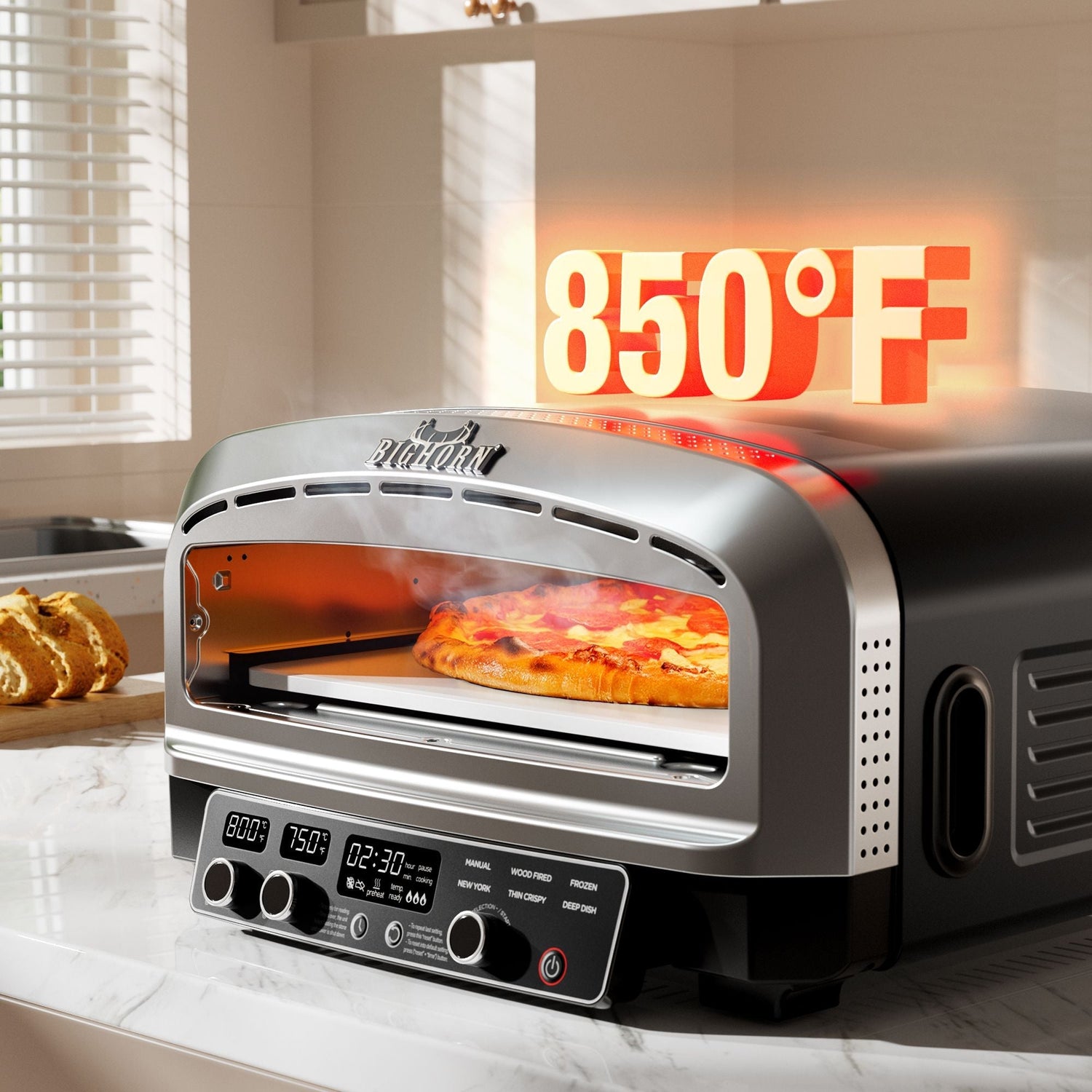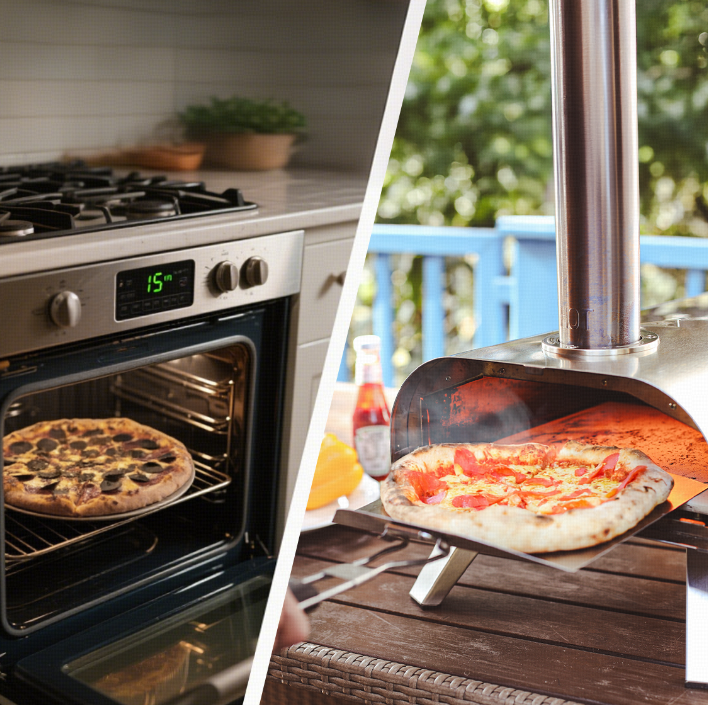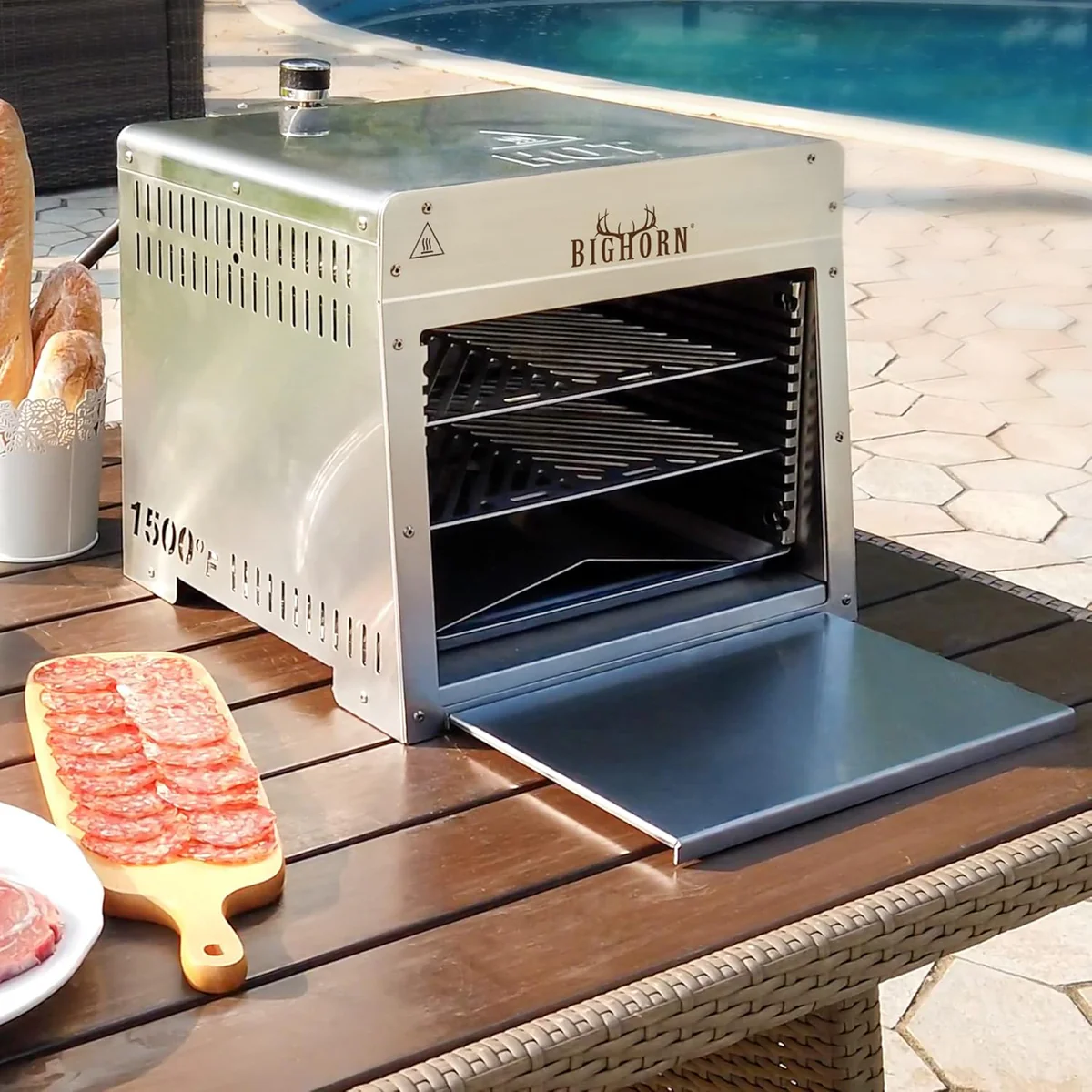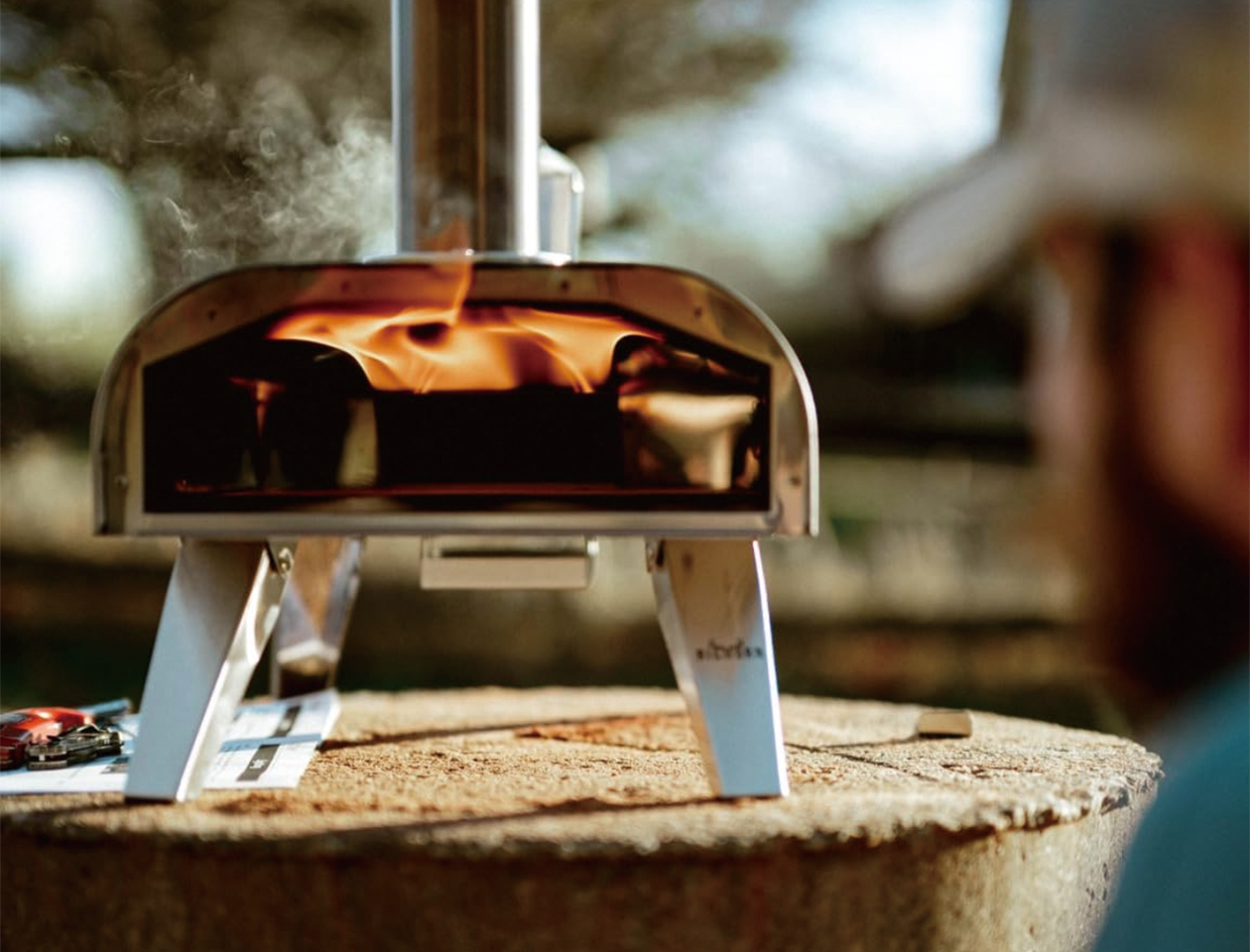You’ve just unboxed your new electric pizza oven. You can already picture that first pizza: the perfectly melted cheese, the crispy crust, the incredible aroma filling your kitchen. But as you find the perfect spot for it on your counter, a practical question stops you. What about all the heat and steam? Do you need one of those big metal hoods you see in restaurants? It’s a thought that crosses every new owner's mind, and getting the right answer is important. Let’s walk through this together, step by step, so you can cook with complete confidence.
The Most Important Question: Are You Cooking at Home or for a Business?
Before we go any further, let's get right to the heart of the matter. The answer to whether you need a hood all comes down to a single, simple question. Everything else—the rules, the costs, the requirements—stems from your answer.
- Are you cooking at home for yourself, your family, or your friends?No. You almost certainly do not need a special hood. Your home kitchen is already set up to handle what a countertop pizza oven can put out. You can breathe easy.
- Are you cooking for a business? (This includes a restaurant, a café, a food truck, or a catering company).Yes. You absolutely must have a professional, commercial-grade hood. This isn’t a suggestion; it's a legal and non-negotiable safety requirement.
Why the Rules Are Different: A Story of Two Kitchens
You might be wondering why the rules are so black and white. The reason is simple: a home kitchen and a business kitchen do completely different jobs.
Imagine a restaurant on a busy Friday night. The pizza oven is a key tool that runs for hours on end, baking pizza after pizza without a break. It might be on for 12 hours straight, cooking hundreds of pizzas. This intense, non-stop work creates a huge and constant flow of heat, greasy steam, and smoke. To handle this safely, a powerful ventilation system isn’t just nice to have—it’s essential.
Now, think about your kitchen at home. You might use your pizza oven for an hour to make dinner. It’s used occasionally and for short bursts. The amount of heat and steam it creates is small and manageable. Your regular kitchen can handle it without any special equipment.
What Happens in a Busy Restaurant Kitchen
This is where the rules get serious, and for good reason. In a commercial setting, a hood isn't just a piece of equipment; it's a critical safety system that deals with three constant dangers.
Grease Buildup: A Major Fire Hazard
When you cook pizza all day, tiny bits of grease from cheese and toppings become airborne. Imagine a fine, sticky layer of that grease slowly coating every surface: the walls, the ceiling, the other appliances. That’s not just grime—it’s fuel waiting for a spark. It creates a serious fire risk. A commercial hood is built with special metal filters designed to trap that grease out of the air before it can land anywhere else.
Extreme Heat: Unsafe for Workers
A commercial oven blasting at high temperatures for hours can turn a kitchen into an incredibly hot environment. The air in the kitchen can quickly become unsafe for employees, leading to heat exhaustion and dangerous mistakes. A hood works to pull that sweltering air straight from the source and shoot it outside, keeping the kitchen at a safe and workable temperature for the staff.
Smoke, Steam, and Fumes: Bad Air Quality
Without a hood, a busy kitchen would be filled with a thick haze of smoke, steam, and cooking fumes. Breathing that unhealthy air all day is terrible for the lungs and makes for a miserable work environment. A hood is constantly cleaning the air, pulling out all the smoke and steam so that the chefs and staff can breathe easily and stay healthy.
Even at Home, Good Airflow is Your Friend
Just because you don’t need a heavy-duty hood at home doesn’t mean you can forget about ventilation. Creating some simple airflow is a smart habit that makes cooking safer, cleaner, and much more enjoyable.
Protect Your Kitchen from Steam Damage
Every time you open that hot oven door, a big cloud of steam rushes out. Without any airflow, that moisture has to go somewhere, and it usually ends up on your walls and cabinets. Over time, that dampness can cause paint to bubble and peel. A little bit of air movement sends that steam packing before it can do any harm.
Keep Your Kitchen Cool and Comfortable
An electric pizza oven gives off a lot of heat, which can quickly make your kitchen feel stuffy. Instead of feeling warm and uncomfortable while you cook, a little airflow can pull that excess heat out, keeping you and your kitchen feeling fresh and comfortable.
Clear Out Smells and Prevent Smoke Alarms
We all love the smell of pizza, but you might not want it lingering for three days. Good airflow clears out cooking odors much faster. More importantly, if a stray piece of cheese drips and starts to burn, it can create a surprising amount of smoke. Ventilation whisks that smoke away before it has a chance to set off your smoke alarm.
Easy Ways to Get Good Airflow at Home (No Hood Needed!)
Getting good airflow doesn't require a renovation. You just need to use what you already have.
Use Your Existing Stove Hood
This is your best bet. Most kitchens have a fan right above the stove. If you place your pizza oven on the counter nearby and turn that fan on, it will suck up most of the heat and steam. It’s the simplest and most effective solution.
Open a Window for a Cross-Breeze
Never underestimate the power of an open window. It lets hot air and steam escape right outside. For an even better effect, open a window or door in another room. This creates a gentle "cross-breeze" that pulls the kitchen air out even faster.
Use a Simple Fan for Circulation
A small fan can work wonders for moving air around. The trick is to place it in a doorway. Have it blow out of the kitchen to push hot air away, or have it blow in to bring cooler air to you. Just avoid pointing it directly at the oven.
Consider an Air Purifier for Odors
If you’re mainly concerned about stubborn cooking smells, an air purifier with a carbon filter is a great tool. It won't help with heat or steam, but it’s fantastic at trapping and getting rid of the tiny bits in the air that cause odors.
Your Quick Checklist: Hood or No Hood?
Let's boil it all down into one simple list.
You absolutely NEED a hood if...
- ✅ You are cooking in a restaurant, food truck, or any business.
- ✅ You are serving food to the public.
- ✅ Your local health code requires it (which it will for a business).
You DO NOT need a special hood if...
- ✅ You are cooking at home for yourself, family, or friends.
- ✅ Your oven is a standard countertop electric model.
- ✅ Your kitchen has basic ventilation, like a window or a stove fan.
Conclusion
In the end, the need for a hood is clear. For home cooks, a special hood isn't necessary. Just focus on creating good airflow with a window or your stove fan for a safe and pleasant experience. For any business, a professional hood is a legal requirement for safety. Always follow your local health codes. At Big Horn Outdoors®, we believe safe cooking is happy cooking. Understanding your ventilation needs is the first step to creating great food, whether you're cooking indoors or out.To learn more about selecting the right outdoor pizza oven, check out our blog: Guide to Outdoor Pizza Ovens.




